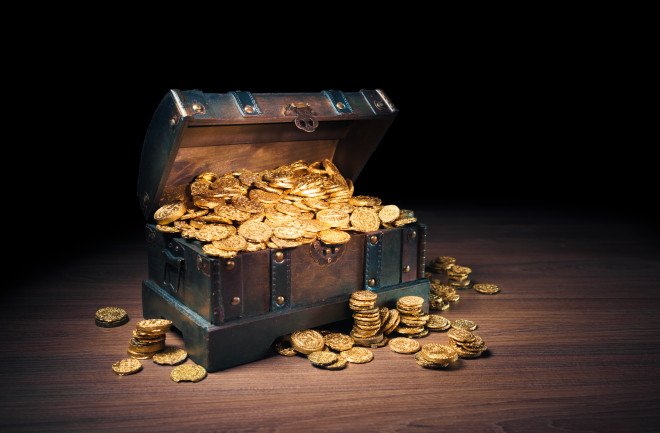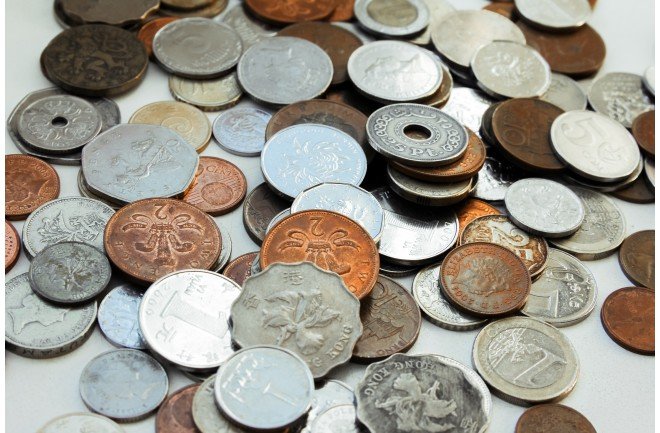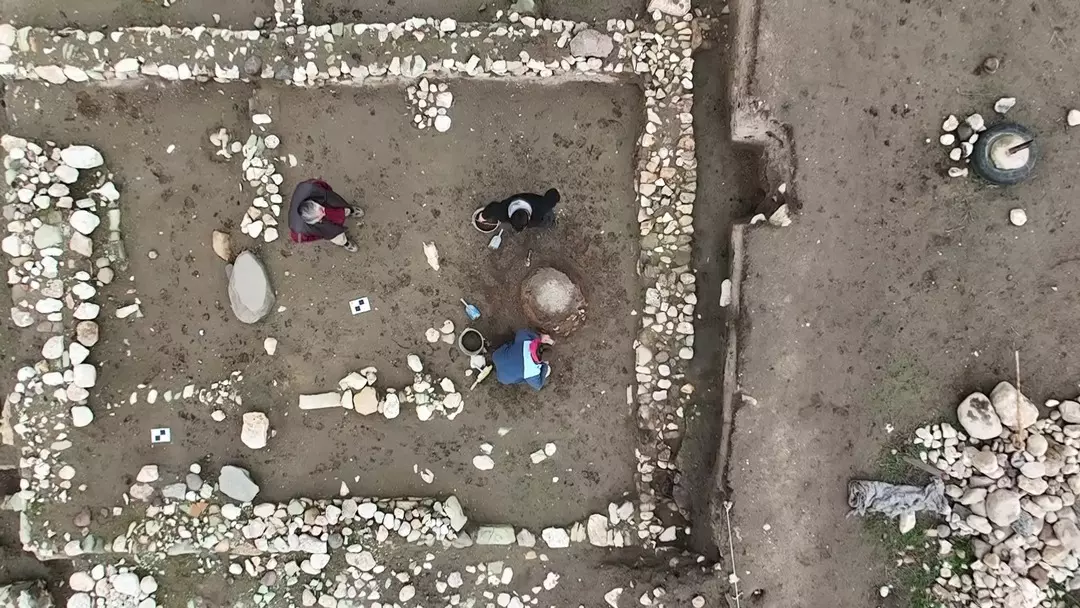Money has existed among humans for thousands of years. Find out more about the earliest forms of money in history, such as coins, shells, and livestock.
Pull out some change from your pockets. If you're in the United States, you'll probably find some tattered bills and a few dull coins. What you are carrying is a small amount of history, even though they may not seem like much.
Your worn-out dollar bill is one of many that have been produced in the United States since 1862. The penny first debuted in 1793, three years before the quarter was introduced in 1796. Some of them are possibly in your possession, forgotten at the base of your bag.
Of course, human cash has a much longer history than only the 18th and 19th centuries. The usage of money and coins has been a major component of human culture for thousands of years. But when did it begin, and what were the first kinds of money in existence?
Coins from different countries of the world (Liiiz/shutterstock)
Inventors of Money
Money's origins are hazy and tangled up in uncertainty. Archaeologists and historians can only guess at the history of ancient civilizations because they arose at various times and used a variety of diverse methods to document it (some of which were more rigorous or permanent than others).
But in general, money emerged as a means of exchange. Since its creation, commodities and services have been exchanged for physical items like coins and pieces of paper. Many economists now maintain that the development of currency was necessary to replace the barter system, which allowed for direct exchanges of commodities and services without the need of money.
Who Made Money?
The Wealth of Nations, written by Scottish economist and philosopher Adam Smith in 1776, promoted the notion that barter will eventually give way to cash. However, several contemporary economic anthropologists disagree with this assertion.
Adam Smith was a pioneer in the thinking of political economy (Credit: ismailyildiz/Shutterstock)
The late anthropologist David Graeber argued that there is little proof that currency has replaced barter in his 2011 book Debt: The First 5,000 Years. Instead, Graeber proposed that before coins and cash took over, humans employed mediums of account—systems of debt and credit, recorded in items like ledgers and promissory notes.
The Royal Anthropological Institute of Great Britain and Ireland released a paper by British anthropologist Caroline Humphrey in 1985 that came to a similar result. "No example of a barter economy, pure and simple, has ever been described, let alone the emergence from it of money," the author said. Because of this, the debates over "money from barter" and "barter from money" are still debatable, complex, and far from being resolved.
Whatever occurred first, though, one thing is for sure: Humans eventually began using objects as currency, giving those objects a tremendous amount of value.
What Types of Currency Were the First?
Shell money (made of shells or beads) and commodity money (made of things with a practical use, like grain), both of which appear to have made up early forms of currency all over the world—from the Indigenous tribes of America to the villages of Africa to the people of Asia and the South Pacific islands—appear to have existed at the same time.
Chinese shell money from 3,000 years ago. (Credit: PHGCOM, CC BY-SA)
Numerous other items, including tea bricks, animals (think "The Price Is Right" with cows), diamonds, and metal bits, were probably utilized as early kinds of payment. However, along with a few other prehistoric civilizations, ancient China, ancient India, and ancient Greece are the only known places where coins were used as currency.
Coins were first created when?
Cowrie shells were used as the country's earliest form of money, but these little trinkets were quickly augmented and replaced with metal coins. Some academics believe that during the 8th and 5th centuries B.C., during the Spring and Autumn Period, this transformation took place.
Similarly, the first attempts at metal money in India were "punch-marked coins," which were primarily made of silver and imprinted with organic shapes and symbols beginning in the sixth century B.C.
Chinese coin from early 1400s found in Kenya (Credit: Chapurukha Kusimba)
The drachma, a coin called after the Greek phrase that means "to grasp," was introduced by the ancient Greeks at the same time in the 6th century B.C. That moniker makes more sense when you realize that it supposedly had an original worth of a few arrows. Up until 2002, the drachma served as the country's official tender before being replaced by the euro.
The silver sigloi (shekel) and the gold daric, which were produced in the Achaemenid Empire, situated in present-day Iran, between 550 and 330 B.C., are other coins from the 6th century B.C.
Lydian Stater Coins, Early Turkish Money
However, according to tradition, the Lydian stater is the oldest of the old. This piece, which was manufactured by King Alyattes in a region that is now a portion of Turkey in the seventh century B.C., is often regarded as the earliest state-produced coin. These Lydian coins are constructed of electrum, an alloy of gold and silver that occurs naturally.
The Lydian stater was introduced in the kingdom of Lydia over 2,600 years ago. (Credit: lego 19861111/Shutterstock)
In contrast to modern coins, the ancient coins were less homogeneous and frequently resembled oval or bean-shaped bits of metal that had designs stamped into them. The Lydian Lion, a lion and bull confronting each other, came to be known as the Lydian Lion. The coins were produced in Sardis, the Lydian capital.
The stater, like the drachma, deric, and shekel, was expected to meet a specified size requirement, therefore the Lydian coins were all roughly the same size and weight.
Spade Coins: Ancient Chinese Currency
The Lydian Stater held the record for the oldest coin for a long time. However, a study released by Cambridge University Press in August 2021 gave credence to the idea of even earlier currency.
Two ancient Chinese Spade coins on exhibit at the Shanxi Museum (Credit: Freer/Shutterstock)
Clay molds for manufacturing spade coins were discovered during excavations of a bronze foundry at Guanzhuang, in the Henan Province of China. According to a study by Chinese researchers, the features of the molds showed that the location was probably used as a mint to produce uniform coins, and radiocarbon dating suggests that coin minting may have started as early as 640 B.C., roughly the time Lydia's King Alyattes was born.
With any coins created there potentially being older than even the Lydian stater, this would make the Chinese foundry, which was located close to the city's administrative center, the earliest known coin minting location in the entire world. Additional research will be necessary to determine which coin is actually the oldest, but this much is known from the study: Whatever the exact date of its minting, Guanzhuang money was unquestionably old.













